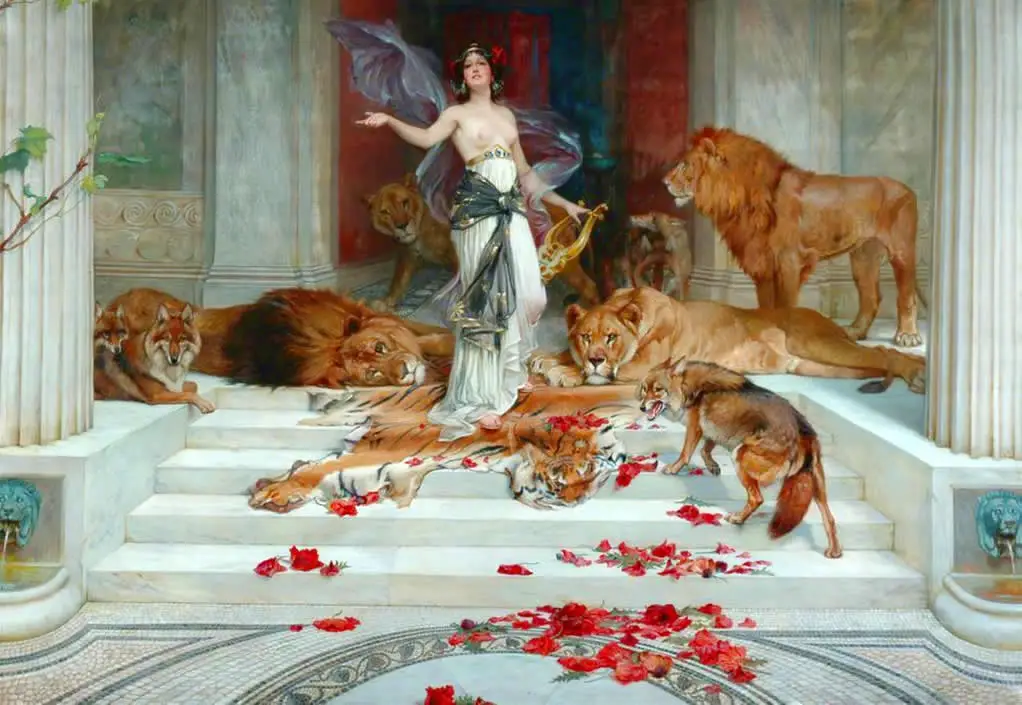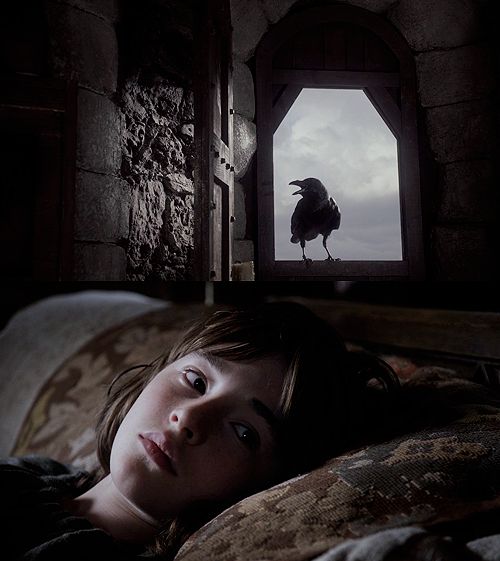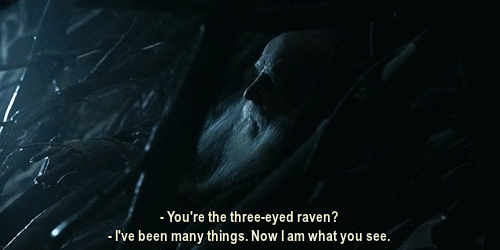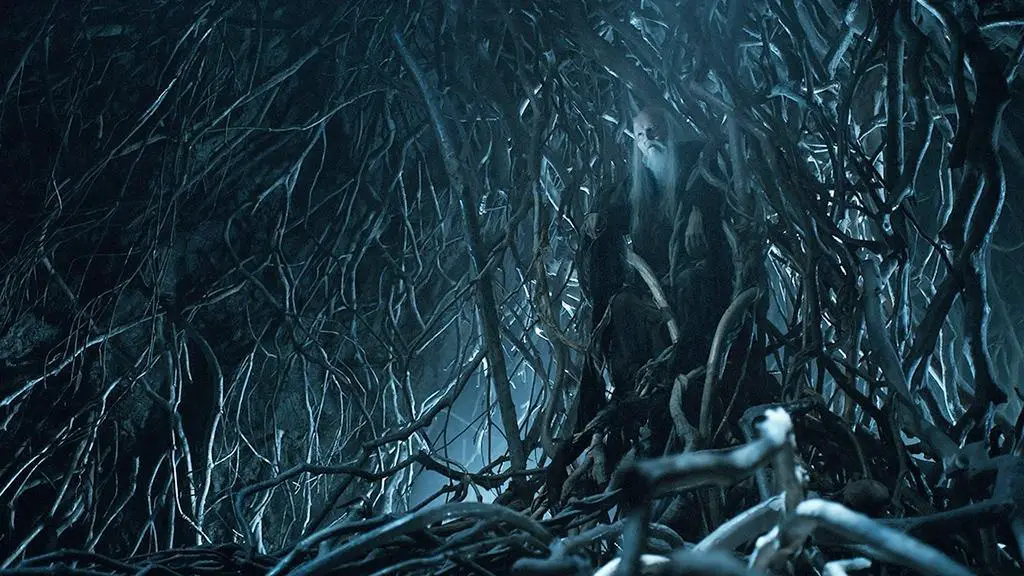Discovering the mythical archetypes that hide behind the figure of Bran in the successful television serial based on the saga of George RR Martin
article Roberto cechetti
captions and notes by Marco Maculotti
The eternal symbols of tradition, names, signs, entities and beings connected to each other by similarity and analogy, inevitably gravitate around the same archetypes, as around an energy that attracts them. And so, by virtue of an irresistible signifying force, such symbols also re-emerge in the modern — for those trained to recognize them - beyond that camouflage Mircea Eliade had already talked about [1]. In Game of Thrones (Game of thrones) and in the work of George RR Martin we find many archetypal themes that too often tend to go unnoticed.
It is the case of Bran stark, central character in the whole story of Game of Thrones. His name follows that of Brân the Blessed (Welsh Bendigeidfrân, literally "Crow Benedict"), divinity of Celtic mythology, King of Britain. The functional archetype of Bran Stark is, as we will try to demonstrate, that of the rhythm, which inevitably is intertwined with the theme of weaving, by Circe, by Crow and of vision: all mythical elements, these, which are archetypically connected.
Let's start by noting how Bran was thrown off the tower by Jaime, just as he was about to witness something he absolutely shouldn't have seen, namely the incestuous union between the two brothers, the prince and princess Lannister. As a result of this, the boy will lose the use of his legs, will struggle between life and death [2], and in the nights she will watch beside him there Old Nan, a woman of great wisdom, custodian of the Northern tradition. She will tell him the stories about strangers, the magic of the first men, the enchanted forest, the barrier, and - as happens in the mind of the elderly - Bran will be confused in the tales with the ancient Bran builder of the barrier, historical ancestor in which the young noble seems to revive. Meanwhile Nan weaves, like a wise old woman by the fire.

It will be in a kind of semi-sleep [3] that Bran will begin to see a three-eyed crow, a constant image that will lead him to the vision. After all, the boy, following his fall, he had lost some worldly qualities and, as often happens both in mythical tradition and in philosophical metaphorology, he will acquire other, superior, peculiar ones. Bran's fate is sealed: as a new shaman the boy will become a mythical being, that is to say a metamorph, a man capable of changing shape, of entering one primordial harmony with the forms of reality, especially with animals, and to see the world through their eyes [4].
Not only that: Bran will become an expert in the spatial and temporal dimension, therefore he will be able to untangle the weft and warp of the founding elements of reality: space and time, quality and quantity, essence and substance - in the words of René Guénon. To do this it is necessary find the most radical wisdom, that of rhythms, that of cross, that of weaving.
The unforgettable Elémire Zolla already explained it in Secret truths exposed in evidence:
« Kerkizein in Greek it means to weave and the noise made by the beam resembles the croaking of the crow (Korax). "
Here is therefore identified a symbolic-semantic link between the loom and the crow. In addition, Zolla always reminds us of Circe (Church) the great initiate into textile art, a woman tied to solar cults, capable of magically bringing beings back to the shape she desired:
«… He does not weave simple clothes, but configures the tapestry of what he magically wants to happen, his is the archaic oracular loom, the greatest tool of magic of the female priesthoods. "
Whoever possesses the initiation into textile magic knows how to see between the plots of reality and can modify events at will, in the past and in the future. Circe is the woman-magician who knows forms - she too metamorphic - and it was always she who gave the initiation of weaving, by virtue of which Ulysses' companions were brought back to the shape of pigs. Furthermore, Zolla will note that:
«… The Indo-European root of Circe… also generates Middle Irish skull, sow, and we see the connection between the function of Circe, which spreads the swine transe, and that of Varahi, the supernatural swine lover of the Tibetan tantra adepts. "

This initiation in fact had to lead to the unmanifest point that resides immutable beyond all forms, a point from which the forms themselves and all beings descend and generate themselves. Like this Circe would impart knowledge of the contiunctio oppositorum, so dear to the whole alchemical tradition. This conjunction of opposites had to be experienced - here is the link with Tantrism - which one source of pure energy, in which the divine could reveal itself (also and above all as an immanent power).
The weave Kerkizo, the croaking of the beam and the crow Korax, the sorceress Circe Church which imparts the initiation of weaving through the knowledge of forms and their intertwining - here are the traditional-symbolic keys to fully understand the figure of Bran. Now we can see the references that are esoterically hidden in the stories of the Game of Thrones, events that seem to want to communicate those immutable meanings that often, in our age, appear under the guise of a fantastic narrative.
This conjunction of opposites we find it in fact in the narration of Games of Thrones, and more precisely in the alchemical wedding (Hieros Gameos) between Jon Snow and Daenerys Targaryen, in turn personifications of opposites: ice and fire, of which George RR Martin writes the chronicles [5].
It should also be emphasized that the image of Old Nan weaving is not accidental. Nan is the woman-sorceress who can be assimilated in all respects to Circe. She will be the one to impart the textile-metamorphic initiation to Bran, through his fairy tales that will lead the boy to identification with the crow, that is, with the adept of textile wisdom, and later to the shamanic vision [6].

In Perennial philosophy and natural mind again Elémire Zolla, in the opening chapter in which he deals with the origin of the words that designate irrationality, reminds us that:
«… With Indo-European roots king e redh come in Latin ordo, order, and order, I warp, but also Exōrdior which denotes the beginning of a weaving. This connection responds to a precise archaic conception of weaving as a spell woven through the intertwining of the threads on the loom… The fuze in this magical work has the function of an arrow. The colored threads connect in order to work spells or predict fate; the loom is therefore the machine by which the witch woman, weaving (in text the terms Weib-WebenIn English wife-weaave underlines the affinity between woman and weaving), deceives, envelops and binds: corrects, “rationalizes” reality in the sense that “rationality” could have had in its origins. "
Hence also the operative conception of the ornament, which is not to be considered as a useless addition, but as an essential element for magical and ritual purposes.
Once the traditional context to which Martin wants to refer has been clarified, we could ask ourselves how such knowledge can come true again in our time, in our historical condition which, as we know, from a traditional point of view is characterized by a precise quality. temporal which seems to hinder any attempt at spiritual elevation and ascent to the sphere of the qualitative. In a world in which the image is constantly multiplied, manipulated, ostentatious, and in which the real seems constrained in the restricted and stereotyped dimensions of the same narratives, of the usual speeches, of chatter and of the impersonality of the Si Heideggerian, in a condition dominated by the weight of quantity, what does it mean to go back to being "seers", what does it mean to acquire the ability to see? I believe that the metaphors and symbols used by Martin to describe Bran's events can open us to interesting perspectives in this sense.

The end, anticipating the conclusion, could consist in overcoming of visual idols, that is, from the visions already given of reality, to re-establish reality itself according to a free will. To investigate the matter in depth we would be led into philosophical questions that concern not only philosophical idealism but also its actualization, or rather themagical idealism of which Julius Evola spoke. In fact, being traced back to the origin of forms means finding oneself in that place of union of the two poles that philosophy has always tried to analyze, know and connect: me and the world.
Going back to the original indistinction - as Hegel would say, once we arrived at the moment of synthesis we went back again, we are pushed back to the beginning -, by going up philosophically, magically or initiatively up to the One in which all being is in everything and where subject and object are no longer distant and separate, we become free as we cease to think of ourselves as separate, as gods. in-itself, and thus we break the spell of the I-world separation. Everything is related to everything and is determined through everything with which it enters into a relationship: everything is intertwined and the world is a fabric.
If then the reality is inevitably a reality always perceived, intentional and together re-created from the subject who enters into a relationship with the world, to modify the world it is necessary to do as Bran: so, once we have reached the zero degree of the origin of each form, after having observed and learned all the rhythms of reality, we would be able to recognize the root of each manifestation and therefore to generate new intertwining.

The initiation will therefore consist in a refinement of hearing and sight, in a destruction of the visions already given, of the usual plots: that is, it will be unraveling the web of reality to weave a new one, day to day. Sew, weave, connect unprecedented connections! This is the operation ofmagical idealist who no longer sees the things of this world but sees directly the rhythmic root of everything, the idea, the archetype. Then the Bran-shaman-philosopher will be the released in life, transformer of himself and transformer of the world.
In conclusion, I like to recall a Zollian provocation, taken up in another context by Fachinelli himself, for which the great invention of modernity will be virtual reality: the magic glasses that today are in fact within everyone's reach. Through virtual reality, modernity will be forced to implode as not only the inconsistency relative to the objectivity of the real but even that of the ego will emerge evident [7]. You will be able to experience the ancient initiations, you will be able to fly, you will be able to explore other dimensions and unexpected worlds, or, once again, the imagination will remain a slave to the lowest instincts and will be weakened, dismembered and destroyed until it is reduced to mere reverie.
Note:
[1] See. Mircea Eliade: "The myths of the modern world".
[2] The theme of the initiatory disease during the infancy of the new shaman, followed by a "new birth" is typical of shamanism. See M. Eliade, Shamanism and the techniques of ecstasy. Mediterranee, Rome, 2005.
[3] This too is fully in line with shamanic beliefs.
[4] This is a topos that is also found in European witchcraft, which in the final analysis presents itself, as we have shown elsewhere, as a form sui generis and degenerate of shamanism. See M. Maculotti, The Friulian benandanti and the ancient European fertility cults e Metamorphosis and ritual battles in the myth and folklore of the Eurasian populations.
[5] The juxtaposition between ice and fire recalls, in addition of course to Norse mythical cosmology, the more recent and (more or less) scientific character of Hans Hörbiger; cf. Pauwels and Bergier, Hans Hörbiger: The Cosmic Ice Theory.
[6] The crow is connected to sacred and shamanic wisdom throughout the Northern Hemisphere, both in Europe (Apollo and Wotan) and in the North American tradition.
[7] This is a theme dear to director David Cronenberg, as we have seen; cf. R. Siconolfi, David Cronenberg: the Demon in Matter.
⇨ Roberto Cecchetti and Silverio Zanobetti have created a YouTube channel— "Accursed Philosophers”- in which the two philosophers want to recover the dialogical character of philosophy. It is a series of videos in which the theory is not decided a priori but develops in the course of the discussion. In the channel there will be great guests and both more strictly philosophical themes and others of a more pop character are treated.

2 comments on ““Game of Thrones”: Bran, the crow, the weaving"